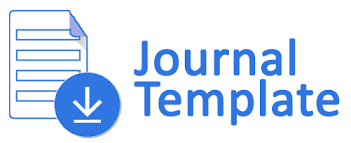Kajian Deskripsi Semiotika Pada Pakaian Khas Kediri
DOI:
https://doi.org/10.29407/pn.v8i1.18861Keywords:
Semiotic description, Typical clothing of Kediri, Wḍihan Kaḍiri, Ken KaḍiriAbstract
Traditional clothing as a form of regional identity and pride deserves the attention of all parties, both government, practitioners, academics and society. One of the special clothes that is interesting to study is the typical clothes of Kediri. This study has the objectives: (1) to describe the data sources for studying typical Kediri clothing, (2) to identify the types of typical Kediri clothing, and (3) to understand the values contained in typical Kediri clothing. In conducting research, researchers used semiotic induction description method with a qualitative approach. The data sources for studying Kaḍiri clothing can refer to several historical data sources, traditional values or ethnoarchaeology, such as from inscriptions, statues, reliefs, literature, and ethnoarchaeological evidence. Based on the data sources that have been obtained by the researchers, two types of clothing were born, namely Wḍihan Kaḍiri for men's clothing and Ken Kaḍiri for women's clothing. This typical Kediri dress also has noble values which are its trademark, namely religious values, cultural values, historical values, social values, aesthetic values, ethical values, and economic values.
Downloads
References
Carr, E. . (2014). Apa Itu Sejarah. Jakarta: Komunitas Bambu.
Enda, T. N. (2022). Kajian proses islamisasi di nusantara (studi analisis masjid al – mubarok di desa kacangan kecamatan berbek, kabupaten nganjuk). Jurnal Pendidikan Sejarah & Sejarah FKIP Universitas Jambi, 2(1), 69–75.
Gottschalk, L. (2015). Mengerti Sejarah. Jakarta: Universitas Indonesia.
Iryana, R. K. (2019). Teknik Pengumpulan Data Metode Kualitatif. Sekolah Tinggi Agama Islam Negeri (STAIN) Sorong, 21(58), 99–104. Retrieved from https://www.unhcr.org/publications/manuals/4d9352319/unhcr-protection-training-manual-european-border-entry-officials-2-legal.html?query=excom 1989
Iwik, N. (2021). Perkembangan Museum Airlangga Di Kota Kediri Tahun 1991-2019. 958–963.
Janah, A. (2014). Dinamika Industri Batik Di Kediri Tahun 1994 – 2014. Universitas Nusantara PGRI Kediri.
Kuntowijoyo. (2013). Pengantar Ilmu Sejarah. Tiara Wacana.
Lestari, S. N., & Wiratama, N. S. (2019). The Dark Side of the Lasem Maritime Industry: Chinese Power in Opium Business in the XIX Century. Journal of Maritime Studies and National Integration, 2(2), 91. https://doi.org/10.14710/jmsni.v2i2.3858
Lustyantie, N. (2012). Pendekatan Semiotika Model Roland Barthes dalam Karya Sastra Prancis. Seminar Nasional FIB UI, 1–15.
Morissan. (2013). Teori Komunikasi : Individu Hingga Massa. Jakarta: Kencana Prenada Media Group.
Poerbatjaraka. (1931). Smaradahana. Bandoeng: A.C. NIX & Co.
Rachmat Djoko Pradopo. (1998). SEMIOTIKA: Teori, Metode dan Penerapannya. Humaniora.
Riyanto, A. A. (2005). Sejarah dan perkembangan mode busana. Jurnal Pendidikan, 1(1), 1–6.
Sigit Widiatmoko, Nara Setya Wiratama, H. B. (2022). SEJARAH PERKEMBANGAN INDUSTRI BATIK DI KEDIRI. WIKSA: PROSIDING PENDIDIKAN SEJARAH UNIVERSITAS INDRAPRASTA PGRI.
Surjandari. (2004). Perdagangan Lokal Di Kerajaan Majapahit Avad Xiii – XV Masehi. Universitas Indonesia.
Wiratama, N. S. (2021). KEMAMPUAN PUBLIC SPEAKING DALAM PEMBELAJARAN SEJARAH Nara Setya Wiratama FKIP - Universitas Nusantara PGRI Kediri. ISTORIA: Jurnal Pendidikan Dan Sejarah, 17(1).
Wurjantoro, E. (1995). Kain dalam Masyarakat Jawa Kuna. Jakarta: FS Universitas Indonesia.
Zoetmulder. (2011). Kamus Jawa Kuna Indonesia. Jakarta: PT.Gramedia Pustaka Utama.
Downloads
Published
Issue
Section
License
Authors who publish with this journal agree to the following terms:
- Copyright on any article is retained by the author(s).
- The author grants the journal, right of first publication with the work simultaneously licensed under a Creative Commons Attribution License that allows others to share the work with an acknowledgment of the work’s authorship and initial publication in this journal.
- Authors are able to enter into separate, additional contractual arrangements for the non-exclusive distribution of the journal’s published version of the work (e.g., post it to an institutional repository or publish it in a book), with an acknowledgment of its initial publication in this journal.
- Authors are permitted and encouraged to post their work online (e.g., in institutional repositories or on their website) prior to and during the submission process, as it can lead to productive exchanges, as well as earlier and greater citation of published work.
- The article and any associated published material is distributed under the Creative Commons Attribution-ShareAlike 4.0 International License









